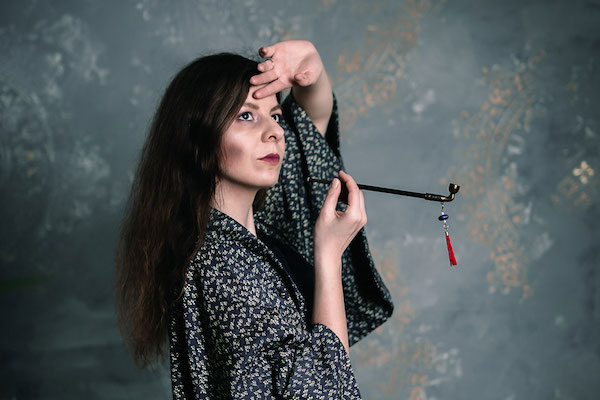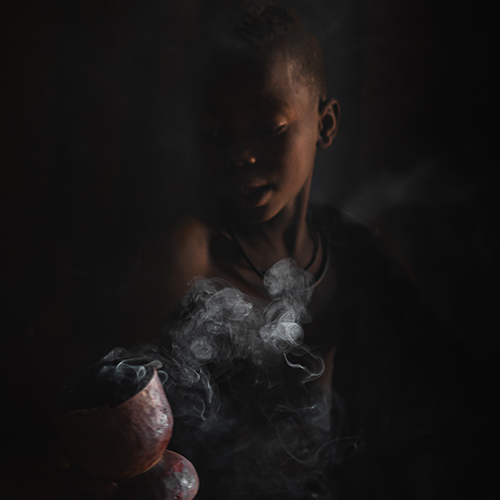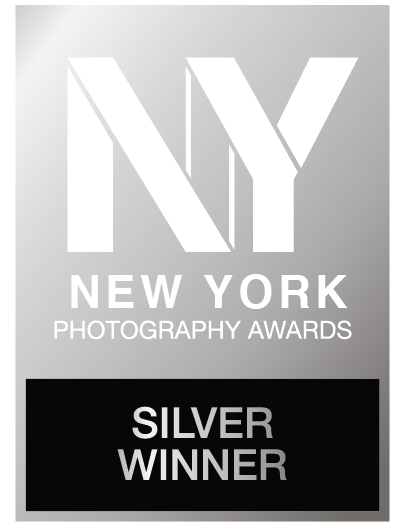
Monika Wanat
1. Can you introduce yourself and talk about how you got into photography?
My name is Monika Wanat, and I am an artist, photographer, and scientist. Most of my art is photography. As a scientist, I am a crystallographer, which can also be considered a form of photography, albeit focused on single molecules. Instead of visible light, I use X-rays, and the final "photograph" is developed through mathematical analysis of diffraction patterns and computational methods.
Photography is my lifelong passion that began in my childhood and has evolved in various directions, including a scientific approach. I love experimenting with different ideas and methods.
2. Where did you study photography?
I didn't study photography. I am a self-learner, however, after years I took some classes to help me master my photography. Now, I also teach photography as the author of the newsletter "Artistic Lessons of Photography" which I create in cooperation with contemporary artists. In addition, I am the author of two photography courses: "Original and Consistent Photo Editing", "Creative Product Photography", and the e-book "How to Capture Beauty in the Frame? A subjective guide to Aesthetics in Photography. ". Courses, guides, and newsletters are currently available in Polish. I have plans to prepare the English version.
3. Do you remember your first shot? What was it?
I have always taken pictures, so I really can't remember what the first photo was. However, the first shot for my Psyche cycle was in Iceland in 2014. At that time, I had an interest in photography. However, my technical skills and equipment were limited. Nevertheless, I did a shot entitled "Cordiality" that I was proud of and it was my first real artwork.
4. What equipment do you use?
I always use a Sony body – right now, I'm using a Sony A6300. As for lenses, I use them a lot. However, my favorites are Canon 70-200, f/2.8, and Sigma Art 35 mm, f/1.4.
5. What do you hope to achieve?
My dream is to reach a wider audience with my artwork and their general message that everyone, regardless of origin, has the right to a soul – both humans and animals. We should focus on similarities rather than differences and try to be as emphatic as possible.
6. What compliment inspired/touched you the most?
"This is art and no one has the right to decide otherwise."
Being a photographer often means being an artist. For many years, I have done a lot of art that was part of my Psyche art cycle. I didn't have the courage to say that out loud. I just posted these artworks online among many other pictures that I did, including commercial ones, and didn't tell the full story behind them. I was lucky because people around me appreciated me, saw my artwork as art, and encouraged me to go in an artistic direction. I created a separate brand under my name and surname, and within three months, after I started working actively as an artist, I received the New York Photography Award. My artworks are part of the group exhibition in the museum. I had an interview for ELLE Decoration, and I started my first collaboration with the art gallery.
If you read it now and feel the same, that you don't know if your work is really art, don't hesitate! Don't wait until someone else notices you and tells you that. Don't doubt yourself.
7. What inspires your unique storytelling?
Ideas related to my storytelling are always inspired by the life, emotions, and behavior of the person I photograph. My storytelling is emphatic. And by "person," I mean both humans and animals. I believe that animals have the right to their souls as often as we can observe their emotions and intelligence. I photograph people and animals the same way.
8. Congratulations! As the winner of the New York Photography Awards, what does it mean for you and your team to receive this distinction?
I'm really happy that this artwork was appreciated by the jury and grateful for the decision. Increasing the visibility of this project has a deeper meaning. Moments depicted in the "Not for Us" cycle were not meant for us. The project aimed to capture these fleeting moments and share them with a wider audience who can experience these artistic moments that were not meant for them.
9. Can you explain a bit about the winning work you entered into the 2023 New York Photography Awards, and why you chose to enter this project?
The winning artwork "Not for Us II" is part of a "Not for Us" cycle. I performed the artwork in Ovahimba village in Namibia. The tribe members did not pose for me, and I was looking for moments when they were unaware of the camera's presence. I wanted to capture everyday moments that are simply extraordinary in their ordinariness.
This particular artwork, "Not for Us II", is just a portrait of a boy looking at the preparation of aromatic smoke that would be used as a cleansing agent. By playing with light, I wanted to achieve the impression that the artwork was made in a photography studio. This was to emphasize the recallability of this moment.
10. How has winning an award developed your career?
For me, winning the award is a very important distinction because it happened three months after I officially started my artistic career. On the same day, I received an interesting opportunity that allowed me to expand my art. I am very grateful to the Jury for this award.
11. Name 1-3 photographers who have inspired you.
Luke Stackpoole and his dreamy landscapes, Wojtek Biay and his ability to control the light, and Joel Robinson and his vivid imagination.
12. What was the best piece of advice you were given starting out, by a mentor or your role model?
Just to take photos and see other people's photos. They may not seem special, I thought. But when I thought more about it, it went deeper and I saw why. For example, if we imagine a perfect dress or trousers for us when we were children, it will be very different from the dress/trousers that will be perfect now. In time, our aesthetic is developing. The same goes for pictures. Looking at and analyzing pictures that we like and don't like can help develop the aesthetic faster. Therefore, our photographs would be more aesthetic as well.
13. What advice would you give someone who would like to become a photographer today?
Discover and cultivate your aesthetic as it guides your artistic journey and acts as your compass. Experiment with different styles and approaches to refine your style. Delve into other art forms such as painting, sculpture, art installations, product designs, and interior design to enhance your photography. Analyze individual elements like colors, patterns, and textures for valuable insights and inspiration.
14. What is your key to success? Any parting words of wisdom?
I am very careful with words of wisdom. The advice I can get can't just be applied in different situations. Success is not only hard work but also a bit of luck and current circumstances and possibilities. Always essential are hard work, patience, and not giving up. However, I would like to give some more "practical" and specific words of wisdom. So I would say that often I am actively looking for new possibilities. I'm applying for programs, and competitions, and looking for mentors. In this way, I have a lot of scientific achievements, including a ca. 45000 Euro award for my achievements. Now, I'm doing the same with photography, and the New York Photography Award is one of the first results.
15. How do you stay in that space of being receptive to new information and knowledge?
I'm just really curious about the world and I love learning new things. When I was younger, it was my complex. I had a feeling that there was nothing I was good at. I had a lot of skills that I had not mastered and I knew I had a problem focusing on one thing. I think that's one of the reasons I master photography. I could use these skills for my photography projects, and experiment a lot, and it was never boring for me. So, finally, this curiosity and desire to learn are some of my strengths, not weaknesses.
16. Anything else you would like to add to the interview?
If you are interested in my artwork, please visit my website: https://monikawanat.com or email me (art@monikawanat.com). My artworks are available on Fine Art matte paper with museum quality, and the editions are strictly limited. You can also follow me on Instagram: www.instagram.com/monikawanat.art

